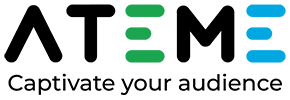The world of media is constantly evolving, and the cable TV industry needs to evolve with it. New generations of viewers want video anywhere, at any time, and on any device with excellent quality. And if they can’t get what they need through cable, they’ll go elsewhere. Cord-cutting is a very real issue — meaning lost customers and lost revenues for cable companies. So in order to stay relevant, more and more cable companies are making the OTT transformation. However, this transformation is not easy and brings its own set of technological challenges. We have identified three challenges — let’s explore them.
Challenge n° 1: Scaling Up
Transcoding for OTT is very different from linear RF, and even from IPTV. Because of the unpredictable nature of the Internet, it requires Adaptive Bit Rate (ABR) encoding: the same content encoded into many different profiles to reach all devices under any network condition. This multiplies the scale of the platform. And the resulting scale is huge. That’s why, in an OTT platform, transcoding needs to be carried out with the utmost efficiency in order to reduce the impact on the platform and on the network.
In fact, with efficient transcoding, the holy grail of low bitrate and high video quality can be achieved. Plus, with the lower bitrate clearing up bandwidth, it becomes easier to achieve low latency, which is crucial to maintaining a high quality of experience during the live streaming of sports events.
But even with efficient transcoding, as the service becomes more popular, the platform will need to scale up. That’s because, unlike broadcast — where the same signal is sent to multiple devices — OTT is a unicast technology. Each device connecting to the platform receives its own separate stream. So the more people are watching, the more streams need to be produced and delivered. Besides efficient transcoding, the key to scaling up and ensuring an excellent quality of experience 24/7 is to build an elastic, cloud-native platform that can immediately reallocate resources as network conditions change — whether that be on premises, in the cloud, or a combination of both.
Challenge n° 2: Acquiring Content
The second challenge is content acquisition (aka “contribution”) from the edge. This needs to support different delivery modes (terrestrial IP and satellite), as well as different transport protocols and codecs. What’s more, these protocols and codecs might evolve with time. All this means that a flexible contribution solution is required. Ideally, this would be a software solution, as software brings the flexibility needed to keep up with changing features and technologies without being tied to a particular hardware platform — and without having to buy a new piece of hardware every time a new feature is introduced.
However, there is a catch, and that is that latency is extremely important for contribution. If latency is high at this stage, it will only be higher once the content has been processed and delivered to the viewers. But achieving low latency using a pure software solution can be extremely challenging, as the underlying hardware accelerators cannot be used.
Challenge n° 3: Optimizing Advertising
The third challenge is advertising, as the traditional route is extremely inefficient. OTT makes it possible to optimize monetization through targeted — or even personalized — advertising. However, using linear technology on an OTT platform for targeted advertising means creating a new channel each time a different ad is inserted into a stream. Braving the OTT transformation opens the doors to much more efficient targeted advertising. To achieve this, what is required is a solution with a manifest manipulator that can dynamically switch the ad as the content reaches the different viewers — in other words, Dynamic Ad Insertion (DAI).
The Way Forward to OTT Transformation
When setting up an OTT platform, cable operators need the corresponding technology to follow. The goal is to offer a great quality of experience, to have the flexibility to scale up and add new features as the industry evolves, and to be able to monetize efficiently.
Ateme offers cloud-native solutions for OTT transcoding, software contribution, and DAI that help cable operators reach these goals:
- A pure software contribution solution that acquires feeds in ultra-low latency
- Award-winning efficient transcoders that ensure the highest quality video at the lowest bitrates
- Just-in-Time packagers that only package content when it is actually required
- Audience-aware streaming that optimizes the number of profiles being processed, by feeding the transcoders with data from the CDN
- And finally, a manifest manipulator for targeted advertising with Dynamic Ad Insertion, helping open new revenue doors
To learn more about making the transition to OTT, get in touch with us at Ateme. We’d love to hear from you.

